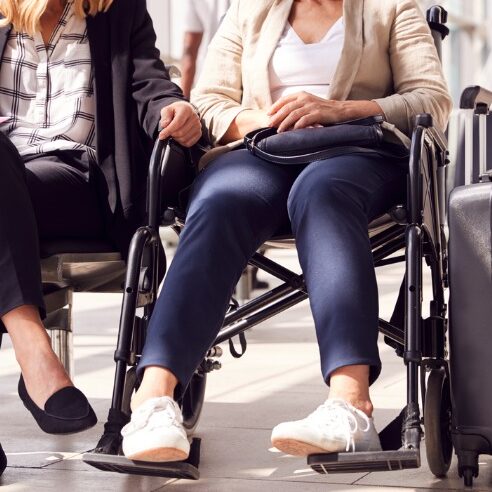About 15 percent of the world’s people live with a form of disability. And who among us will not experience disability at some point in life? WTCC
“It is therefore imperative that we are inclusive,” says Gloria Guevara, president and CEO of London-based World Travel & Tourism Council (WTTC).
To that end, her organization has issued new “Inclusive & Accessible Guidelines.”
“We look forward to seeing these guidelines make real change within the workforce,” Guevara says, adding that providing accessible travel is both a social imperative and a business opportunity. Helping travel become more welcoming and available to people with disabilities will aid the sector’s recovery from pandemic losses, she notes.
See also: How to Accommodate People with Disabilities at Meetings
The guidelines were created after WTTC gathered insights and “frameworks developed by private sector leaders” in travel and tourism, as well as travel and disability experts, and research from intergovernmental organizations.
One of the contributors is Peter Kern, vice chairman and CEO of Expedia Group. “Travel opens minds and drives better understanding between people from different cultures and identities, but sometimes travel isn’t inclusive of or accessible for people with disabilities or accessibility needs. We are proud to have collaborated with WTTC on the creation of ‘Inclusive & Accessible Travel Guidelines,’ a resource we will continue to collaborate on in future development, use in our own business and advocate for their adoption across the travel and tourism industry,” he says.
Divided into four pillars, the guidelines follow a similar structure to the “High-Level Inclusion & Diversity Guidelines” and “Mental Health Guidelines” released by WTTC over the past six months.
The four key pillars are the following.
- Developing an inclusive and accessible system
- Creating safe spaces
- Designing an engaging and relevant system
- Exemplifying inclusion and accessibility
Among the most important aspects of the new guidelines are training staff on disability awareness and how to support travelers with disabilities, as well as collaborating with other businesses in areas where there are gaps in accessibility knowledge, experience and services.
The guidelines also emphasize the importance of fostering a respectful environment, specifically reminding staff that their attitude towards people with disabilities plays an integral role in making that customer feel welcome and included.
WTTC also believes it is imperative that accessibility features be clear, overt and do not require special assistance from staff to use. Beginning from the booking process, businesses should regularly and proactively engage travelers with disabilities in the creation of accessible products and services to make sure these meet their needs.
More: Accessibility Rules: How to Make Everyone Comfortable at Event Venues
The WTTC says staff should also be empowered to address customer concerns as they occur, and inclusive marketing should be developed to dignify representations of all people and authentically represent them.
“People with disabilities (PwDs) have historically encountered many accessibility challenges while traveling. Browsing, booking, flying, sightseeing, relaxing and sleeping all present their own specific obstacles,” says John Sage, president of Accessible Travel Solutions and author of the guidelines. “Consequently, many PwDs must spend many hours handling their own travel details, or they stay home.”
WTTC’s new guidelines, he says, “are an important step forward in bringing accessibility into the mainstream, thereby making travel accessible for all.”
To read the “Inclusive & Accessible Travel Guidelines” in full, click here.




